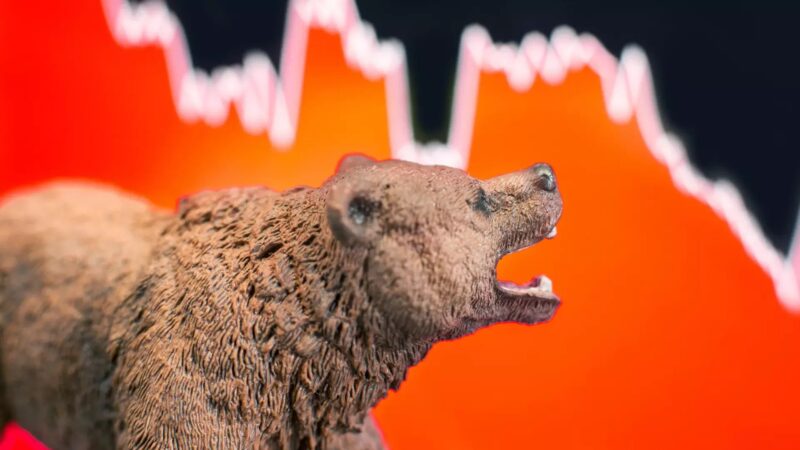In August of 2019, we were at the lowest point in the previous bear market. A project called ETHLend was trading at $0.003 per token, one year later they did a 100 for 1 reverse split as they rebranded to AAVE, then in the summer of 2021, they were able to hit an all-time high of $660. That’s a mind-boggling 2000x from bottom to top. It wasn’t just AAVE either, several other projects were able to pull similar gains from their bear market low to their subsequent bull market high.
It’s definitely possible to get these life-changing gains, but the question is “how do we?” It’s clearly not easy or else everyone would be millionaires by now.
I’ve crafted a bear market strategy that I believe optimizes our chances of getting these gains, and it boils down to a three-step plan.
Step number one is to change your mindset when it comes to bear markets. Bear markets are tough, after getting pummeled for months most people lose hope and feel like giving up. I saw this with my own eyes in 2019, when people in my community swore off crypto forever. But the lowest of lows is actually the best time to buy. Be fearful when others are greedy, and greedy when others are fearful. The best part is valuations would be a bargain at that point, it wouldn’t be like the bull market where any random hyped-up project would launch with a 10-billion-dollar market cap, so in reality, you’d be getting much better deals than at any time during the bull market.
Something else you got to be ready for is all the loud critics who will be coming out of the woodwork, and they always say things with zero nuance. For example, people love to say “99% of projects are going to zero.”
Okay, that could be true but it’s not really useful. First, that still leaves hundreds of projects that will survive, and second, it’s not completely random which projects will die, we can kind of tell already.
Just go scroll down CoinMarketCap. The projects ranked 500 or below are likely already dead whereas the top 100 projects are much more likely to survive for the midterm. It’s among those survivors where we can find the next AAVE. Take Polygon (MATIC) for example, its all-time low in 2019 was $0.003. In 2021 it reached an all-time high of almost $3, that’s a whopping 1000x game. Chainlink (LINK) went from around 20 cents in 2019 to 50 dollars in 2021, pulling a solid 250x. Even ADA, which I’m not the biggest fan of, went from around $0.2 to $3 from their bottom to top, which is an impressive 150x.
Do you see my point? The people who didn’t give up and were still active in the bear market, are the ones who got rewarded the most. However, the question becomes how we find those projects because even the examples I shared don’t seem to have anything in common.
I took a step back and studied all these bear market winners to create an evaluation framework, and that brings us to step number two of this three-part plan, which is to research and identify projects with the most potential.
The overarching approach here is to do incredibly thorough fundamental analysis and use that to decide whether or not you want to invest. You have to dissect the project like crazy so that you understand it like the back of your hand. This was Warren Buffett’s strategy with stocks too, he said he would much rather invest in 3 to 6 companies that he knows inside and out, instead of diversifying into like 20 stocks. This way you can be very confident that your picks are high quality, and you can hold them with conviction until something changes.
Now, what criteria should we use to judge these projects? Unfortunately, there’s not one universal set of criteria. You really have to come up with your own criteria to look for and decide how you’re going to weigh different aspects. How important do you feel that aspect is for your analysis? Just to give some inspiration, here are 10 categories that you could use for your criteria.
1. Valuation or Market Cap.
During the bear market, valuations should be relatively low but if you’re looking for 100x or 1000x potential, you still have to be realistic. You can’t take a coin with like a billion-dollar market cap and think “For sure it’s gonna rocket to one trillion during the bull run.” That’s just not going to happen unless we go through hyperinflation or whatnot. My point is you have to target coins with lower market caps but are still solid per the other categories
2. Active Roadmap
Find the team that is still actively building their project and delivering on the milestones that they set before. During the bear market, so many teams just quit and give up, but they don’t make it super obvious with a big announcement, they kind of just slowly fade away into the ether. This is really important to figure out, investing in a project without an active roadmap is like setting your money on fire. However, an active team is just a bare minimum to ask for because we really should be looking at my third category which is team quality.
3. Team Quality
Do they have a solid pedigree? Do they have the experience necessary to do what they’re trying to do? Personally speaking, this is one of the most important categories that I look for when evaluating a project. A good team can always pivot even if their initial idea is bad, but a bad team is likely going to fail no matter what they do.
4. Funding and Resources
A good team can get a lot done, but they still can’t achieve their goals if they run out of money early. It’s very important to find out how much capital they have saved up, just to make sure they can keep building throughout the bear market and make it to the next bull market. Now, one way for teams to stay flush with money is with my fifth category.
5. Revenue Generation
In the past, asking crypto projects to generate revenue was unheard of, but nowadays quite a few crypto projects do generate revenue whether it’s decentralized exchanges, lending protocols, or even play-to-earn games. Finding a crypto project that does have cash flow could be a very strong sign that it will survive and thrive.
6. Project Utility
Is the project legitimately useful? Is there real adoption from their users? If there are people genuinely using it that makes it much more likely for them to rocket once the bull market arrives? After all, a bull market adds rocket fuels to things that were already solid before.
7. Tokenomics
You have to look at their token distribution, their unlocked schedule, and their token utility just to make sure everything is fair and makes sense. Honestly, I’ve seen bad projects succeed with good tokenomics, and good projects fail due to bad tokenomics. I highly recommend you dig for a project’s tokenomic details and make sure it won’t hinder any future growth.
8. The Project’s Niche
There are so many niches in crypto like lending protocols, DEXs, meme coins, layer twos, etc. We’ve seen entire niches take off together many times in the past, and have their own seasons per se, those were incredible to see. One project would lead the way and then all the small ones in the same category would rocket as well, so we definitely want to analyze their niche and see if it’s promising, both now and in the future. The future is actually more important because if we want to find the most lucrative niche, we have to come up with a hypothesis of what the future will look like, and ideally that project’s niche will be a huge part of that future. If your hypothesis ends up matching with reality, then jackpot.
9. Competitive Advantage
There are multiple projects in any given category, we have to ask, “Why this project over another one that’s similar and as a competitor?” if there are strong advantages that you can identify, then that should give you more confidence that yours will do better and lead the pack per se.
10. Community Strength
Community honestly sounds like a meaningless buzzword these days, but it’s actually quite powerful. Even if a project doesn’t have the strongest utility or the best tokenomics, a loyal community can still carry it further than we can imagine. That’s because these community members are using their own hard-earned money to consistently buy the token. They’re also strong evangelists for the project which is like free marketing for them. While I don’t think it’s absolutely necessary for success, I for sure would rather invest in a project with a strong community than without one.
Now here’s the thing, of course we want to find projects that score high in all 10 categories but if you study historical projects that performed well, sometimes they were weak in certain categories but strong in other ones so there’s no definitive formula for identifying gems. That’s why we have to follow step number three in our three-part plan which is to deploy our capital strategically.
The first thing to do is to decide your portfolio composition. With these bear markets, picks a lot of them will have smaller market caps so it’s definitely riskier than Bitcoin or ETH per se. I wouldn’t personally make these picks too large a chunk of my portfolio, perhaps 20% for myself but you could do lower or higher depending on your risk appetite.
After you decide how much you’re going to allocate it’s time to spread out your capital into multiple smaller bets that you’ve selected. Ideally, these projects score well in several of your categories and are from different niches. You don’t want to put all your eggs into one basket after all. Another very important thing to do is to deploy your capital slowly. The worst thing you can do is to get overeager like “oh the bottom is in, it’s time to go all in.” I did that before and it was the worst mistake I’ve ever made.
You don’t want to run out of dry powder too quickly as that is the biggest cardinal sin during a bear market. Perhaps you could dollar cost average into your picks across a multi-month period. You could also keep an eye on the macroeconomic forces but don’t try to time that too much or else you may miss out on the opportunity completely.
Once you have your capital deployed it’s time to create an exit plan, I won’t go too deep here but you could dollar cost average back out or even set predetermined take profit levels. One thing I strongly recommend is to keep a portion as a moon bag just in case it does go 100x or 1000x then you’ll be able to capture some of that upside. Hopefully that we can all come back in a couple of years with some big success stories to share. Good Luck!








